Kelli O’Hara brings the bright lights of Broadway to the Michigan Theater

Kelli O’Hara is one of those versatile Broadway stars who shines in every show she’s in.
She originated the role of Clara in The Light in the Piazza; played feisty union leader Babe opposite Harry Connick Jr. in The Pajama Game; washed a man right out of her hair as Nellie Forbush in South Pacific; originated the role of Francesca in the stage musical adaptation of The Bridges of Madison County; and charmed her young charges, royalty, and audiences alike in The King and I, for which O’Hara won the 2015 Tony Award for Best Performance by a Leading Actress in a Musical.
All the other O’Hara performances I mentioned earned her Tony nominations, too, plus two more besides: Kiss Me, Kate and Nice Work If You Can Get It. So to call O’Hara one of our era’s greatest leading ladies of the stage isn’t hyperbole; it’s just true.
And although O’Hara’s slated to star in the world premiere Broadway musical adaptation of Days of Wine and Roses, scheduled to start previews January 6, she’s also recently been performing concerts in different parts of the country, and she’s headed to Ann Arbor’s Michigan Theater on Sunday, November 12 at 7 pm.
In advance of the show, the native Oklahoman answered a few questions via email about what inspired the concert tour; her newest upcoming show; and her memories of working alongside Ann Arbor native Ashley Park in The King and I.
Greetings From Hell: The devil is in the details in the University of Michigan’s "Orpheus in the Underworld"
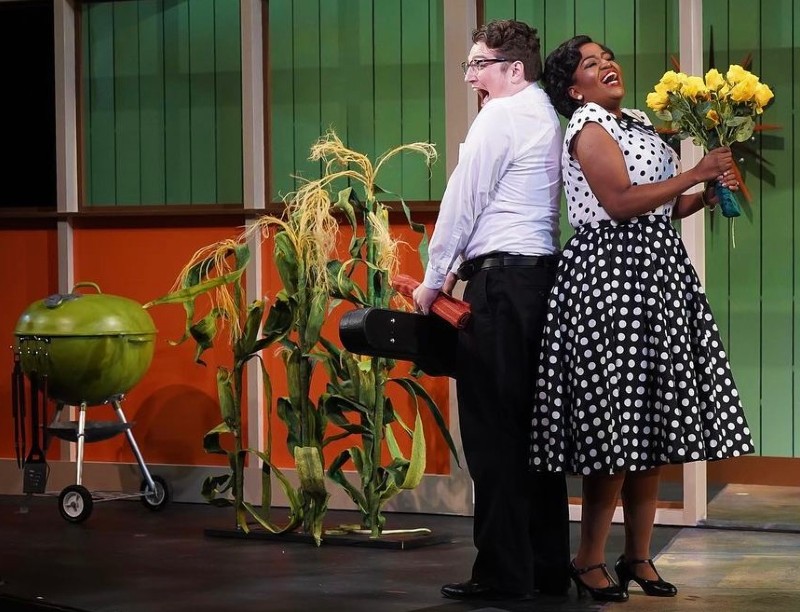
The classic Greek myth of Orpheus and Eurydice is everywhere in the performing arts right now. The play Eurydice, written by award-winning playwright Sarah Ruhl, is being performed on stages all over the U.S. and was adapted into an opera by the same name, and the Broadway smash hit musical Hadestown, which won eight Tony awards including Best Musical, is still going strong in New York City, has a thriving national tour, and is opening on the West End in 2024.
But before all of that, French composer Jaques Offenbach created Orphée Aux Enfers, or Orpheus in the Underworld, in 1858, and U-M's Department of Voice has put a whole new twist on it. (I went to the Thursday evening performance, and the actors I mention here may be different than those seen by others due to the double casting of the lead roles.)
Friday Five: First Tone, Liam Charron, Verzer.ren/Thynk, DÆmons, The Strange Theory of Light and Matter

Friday Five highlights music by Washtenaw County-associated artists and labels.
This week features drift music by First Tone, piano jazz from Liam Charron, minimalist techno via Verzer.ren/Thynk, and technical metal courtesy of DÆmons and The Strange Theory of Light and Matter.
Russell Brakefield's New Poetry Collection, “My Modest Blindness,” Reflects on His Experiences With Keratoconus
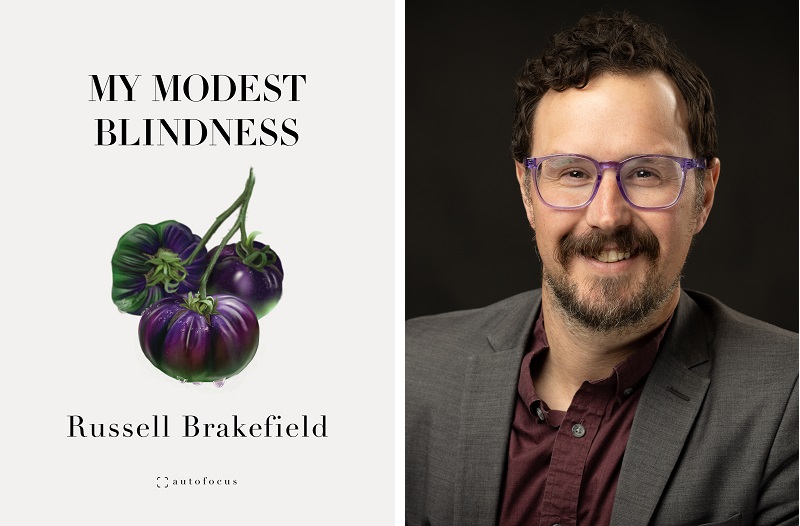
Russell Brakefield’s new poetry collection, My Modest Blindness, is both “a telescope of loss” observing how a health condition called keratoconus robs the sense of sight and an exploration of this new state where there are “maybe a million small truths held just out of reach.” Brakefield’s poems take a “reluctant trowel” to excavate this experience and then “step into a life of shadow.” The poet sees familiar life receding and seeks “to reclaim another.”
The book contains six sections, starting with “Paper Boats” which launches the poet unwillingly down this path with keratoconus. The next two sections bear titles suggesting a clinical examination in “Pathology” and a historical approach to eye conditions in “A Brief History of Corrective Technology.” The fourth section called “Ancestors” looks backward and forward, including family, art, and references to film and other mediums. “In Between Worlds” is the penultimate section, in which the poet identifies lessons, such as humility, and in the “Coda,” begins “again to play.”
The poems themselves, however, remain untitled, which has the effect of immediate immersion into the poet’s dimming world. The exception to titles, though not exactly formatted like a traditional title, is in the intermittent series of one-stanza poems that consistently start with the word “Entry” and a number in the first line. “Entry #7” describes heirloom tomatoes like those pictured on the front cover:
A tag in the dirt tells
me the varietal is Indigo Apple, though all
year I’ve been calling them Bruises or Savory
Plums or Skyline Just Before Nightfall.
For Real: Judy Banker Explores the Power of Emotions on New “Bona Fide” Album

Judy Banker keeps things real on Bona Fide.
The Ann Arbor singer-songwriter explores genuine feelings of heartbreak, grief, and love on her new Americana album.
“One of my litmus tests for myself with a song is: Does it ring true to me? When I think of the vignette, the experience, or the feeling of that kind of relationship dynamic, does it say what I want to say?” said Banker, who’s a University of Michigan alumna and a therapist.
“That’s what I do with my songs—if it doesn’t say it strong enough or it doesn’t capture it quite right—there’s a certain tension that I want to be able to express. I feel like every single one of those songs is like my diary.”
On Bona Fide, Banker takes listeners on a personal journey that explores the cycle of relationships and the emotions that accompany them. The album’s rich harmonies and rootsy instrumentation bring those experiences to life across 11 heartfelt tracks.
“I’m a therapist by day, and on a big-picture level, my adult life has been dedicated to trying to help people to name, understand, and get the complexity of emotions … and that it’s important to work with them and embrace that,” Banker said.
“It’s a very selfish motive in the sense that these are my expressions and my songs, and I like them, but I just hope people say, ‘Oh, I’ve had that feeling.’”
Egg Rolls and Racism: Curtis Chin's memoir recalls growing up in his family's Chinese restaurant in the Cass Corridor
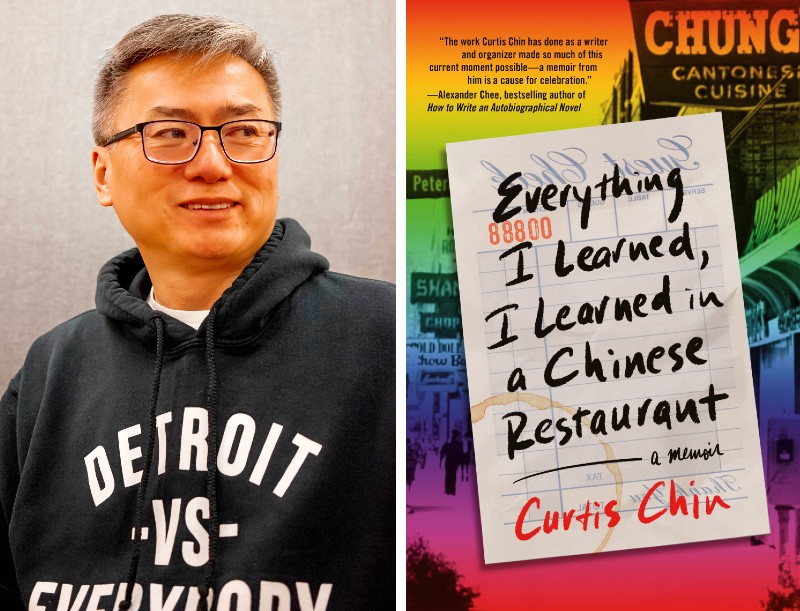
Some lessons arrive early in life and stick with you for years.
For author Curtis Chin, the lesson is “Work hard. Be quiet. Obey your elders.” These instructions become a mantra for Chin as he grows up in his family’s restaurant, Chung’s Cantonese Cuisine, in Detroit. The advice gets him through unfamiliar situations.
Chin recalls his experiences in his new memoir, Everything I Learned, I Learned in a Chinese Restaurant. With humor and the kind of introspection that comes with looking back on one’s life, Chin narrates stories from his time in the restaurant and Detroit, as well as his journey to becoming a writer at the University of Michigan. In fact, he worked at Drake's Sandwich Shop as a student. Food, family ties, and Chin’s identity as a gay American-born Chinese serve as throughlines in the book.
The politics and racism of the '80s parallel Chin’s formative years. Chung’s was in the Cass Corridor, a rough area at that time, and its clientele spanned all races and even drew Mayor Coleman Young as a diner. Chin’s father recognized the lessons to be had from talking with customers and brought his sons from the back kitchen into the dining room: “[H]e had really brought us there to discover the outside world, which was sitting right at our tables. All we had to do was listen.”
Monday Mix: Low Pony, Merekat, MEMCO, Mercury Ulia, DJ Bayb33, DJ Sphinx, Amber Gillen, Jonathan Taylor, WCBN Local Music Show live, We're Twins Halloween comp
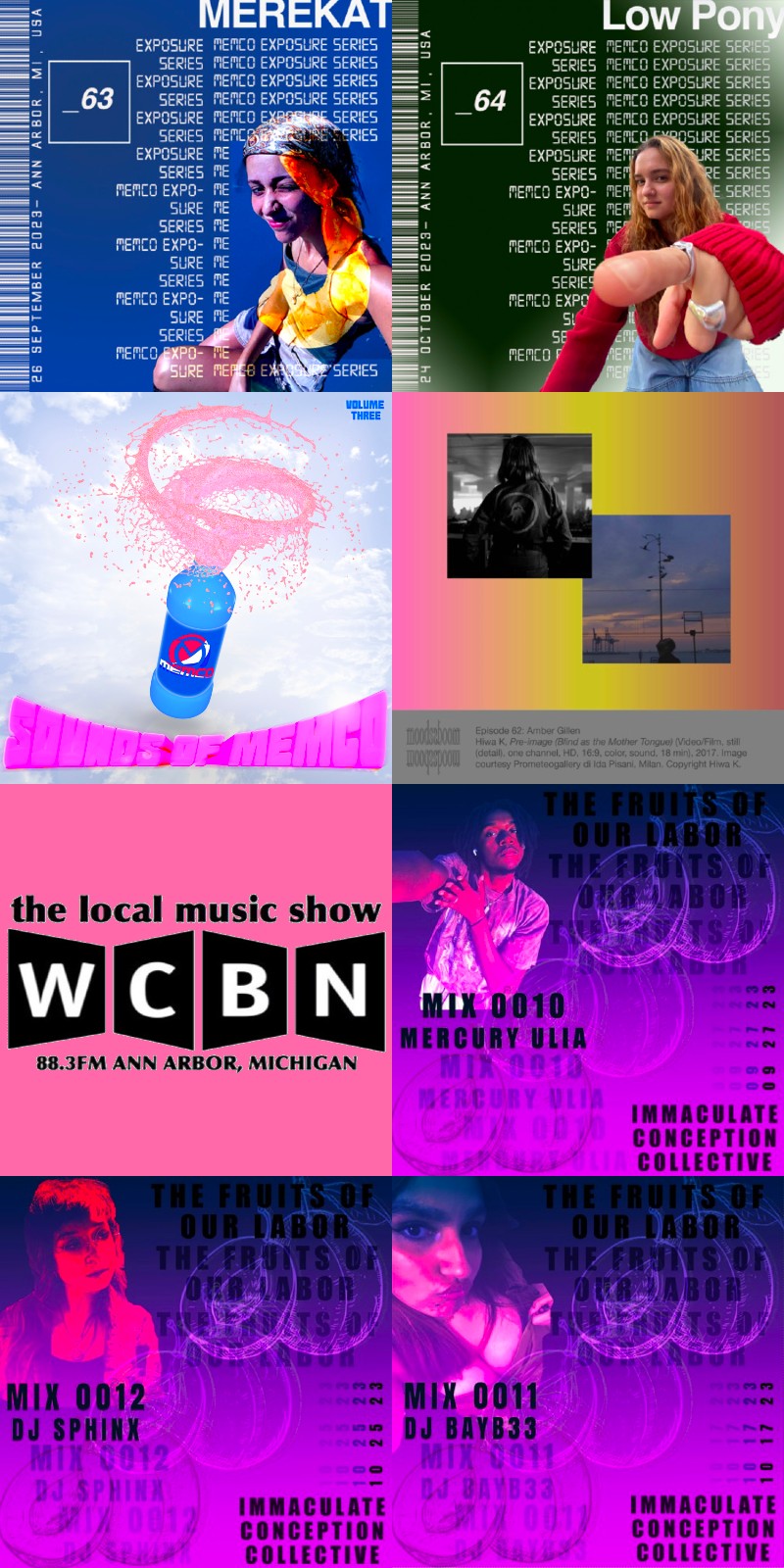
The Monday Mix is an occasional roundup of mixes, compilations, podcasts, and more by Washtenaw County-associated artists, DJs, radio stations, and record labels.
For this edition, there's Michigan Electronic Music Collective Exposure electronica mixes by Low Pony and Merekat as well as an 11-track comp of original music by MEMCO members; Immaculate Conception Fruits of Our Labor dance mixes by Mercury Ulia, DJ Bayb33, and DJ Sphinx; an all-over-the-place Moods mix by former WCBN-FM DJ and Interdimensional Transmissions visual director Amber Gillen; a new Sounds and Silence podcast from Ann Arbor's Canterbury House featuring drummer Jonathan Taylor; a WCBN Local Music Show studio performance collection; and a resurrected Halloween comp by the We're Twins label.
Friday Five: Chill Place, Doogatron, Ahmad, Opius, Fred Thomas
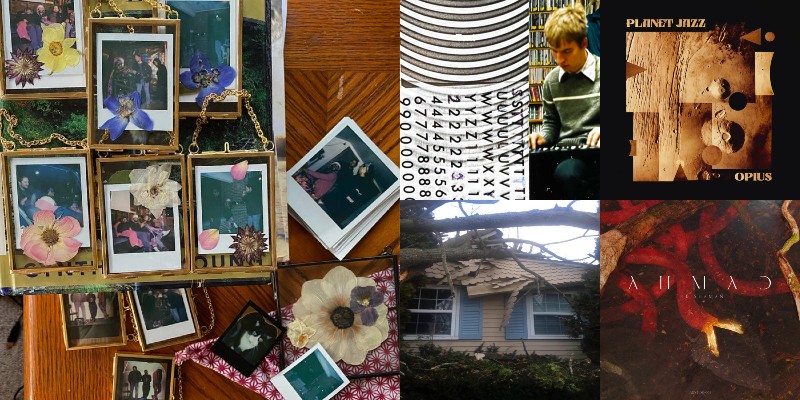
Friday Five highlights music by Washtenaw County-associated artists and labels.
This week features R&B by Chill Place, techno from Doogatron, drum 'n' bass via Ahmad and Opius, and Fred Thomas live on WCBN-FM.
Beauty and the Bard: Concordia University’s "Shakespeare in Love" is a tale of love, poetry, and laughs

Everyone knows Shakespeare's classic Romeo and Juliet. But how did that play come to fruition and what was Shakespeare’s inspiration for the tragic tale?
Concordia University's production of Shakespeare in Love, a play adapted by Lee Hall and based on the screenplay by Marc Norman and Tom Stoppard, takes us back to the days when William Shakespeare was a struggling poet and bard.
William Shakespeare (Corey Flanders) has a bad case of writer’s block. It’s even more dire that he owes two producers a script for a new show, so the pressure is on. His best friend and fellow bard, Kit Marlowe (Caleb Gross), has agreed to help him find some inspiration and has even helped edit a few of his lines. In this day and age, more people are seeing and loving shows written by Marlowe rather than Shakespeare.
Slowly but surely Shakespeare starts building the script for his famous Romeo and Juliet. He prematurely tells the producers he’s got something in the works and they run with it, holding auditions. At this time in history, women were not allowed to act on stage and all female roles were played by men in drag.
Fables of the Deconstruction: Allison Epstein’s second novel uses Eastern European mythology to create queer historical fiction
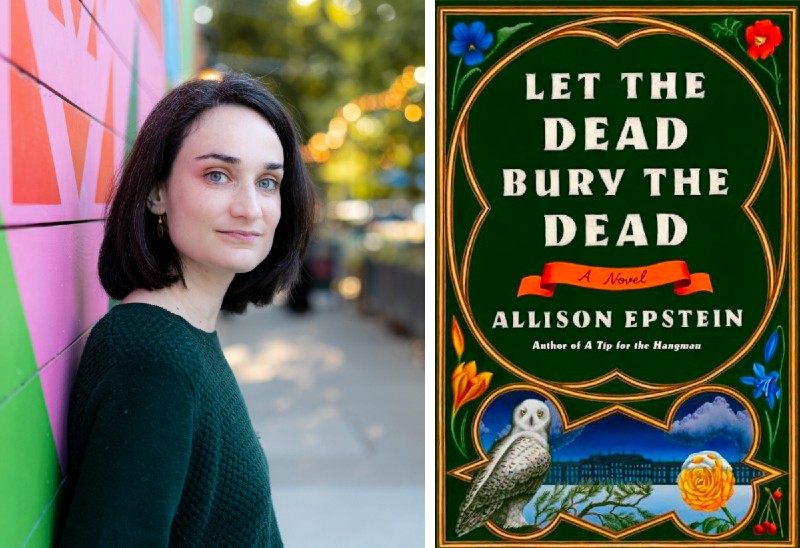
Allison Epstein says Let the Dead Bury the Dead is “my COVID novel, for sure."
She started writing it in 2019 and "most of the drafting and rewriting happened while I was in lockdown, looking for something to do.”
The book is set in 1812 in a partially reimagined St. Petersburg, Russia, where a band of revolutionaries, the Koalitsiya (loosely based on the Decembrists), plot against the tsar, while the tsar’s second son decides whether or not to join them.
The Chicago-based Epstein, who earned her Bachelor of Arts in creative writing from the University of Michigan, also wrote historical fiction in her first novel, A Tip for the Hangman, based on the 16th-century life of playwright and alleged spy Christopher Marlowe.
Epstein says the inspiration for Let the Dead Bury the Dead came from another book set in the same period and country.


































